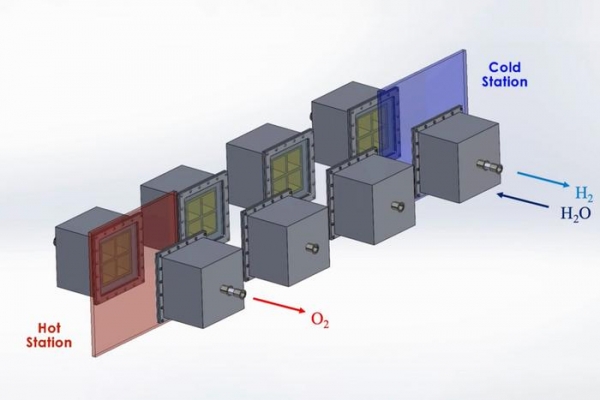MIT engineers aim to produce totally green, carbon-free hydrogen fuel with a new, train-like system of reactors that is driven solely by the sun.
In a study appearing today in Solar Energy Journal, the engineers lay out the conceptual design for a system that can efficiently produce “solar thermochemical hydrogen.” The system harnesses the sun’s heat to directly split water and generate hydrogen — a clean fuel that can power long-distance trucks, ships, and planes, while in the process emitting no greenhouse gas emissions.
Today, hydrogen is largely produced through processes that involve natural gas and other fossil fuels, making the otherwise green fuel more of a “grey” energy source when considered from the start of its production to its end use. In contrast, solar thermochemical hydrogen, or STCH, offers a totally emissions-free alternative, as it relies entirely on renewable solar energy to drive hydrogen production. But so far, existing STCH designs have limited efficiency: Only about 7 percent of incoming sunlight is used to make hydrogen. The results so far have been low-yield and high-cost.
Read More: Massachusetts Institute of Technology
MIT engineers have developed a design for a system that efficiently harnesses the sun’s heat to split water and generate hydrogen.. (Photo Credit: Ahmed Ghoniem, Aniket Patankar, et. al)


